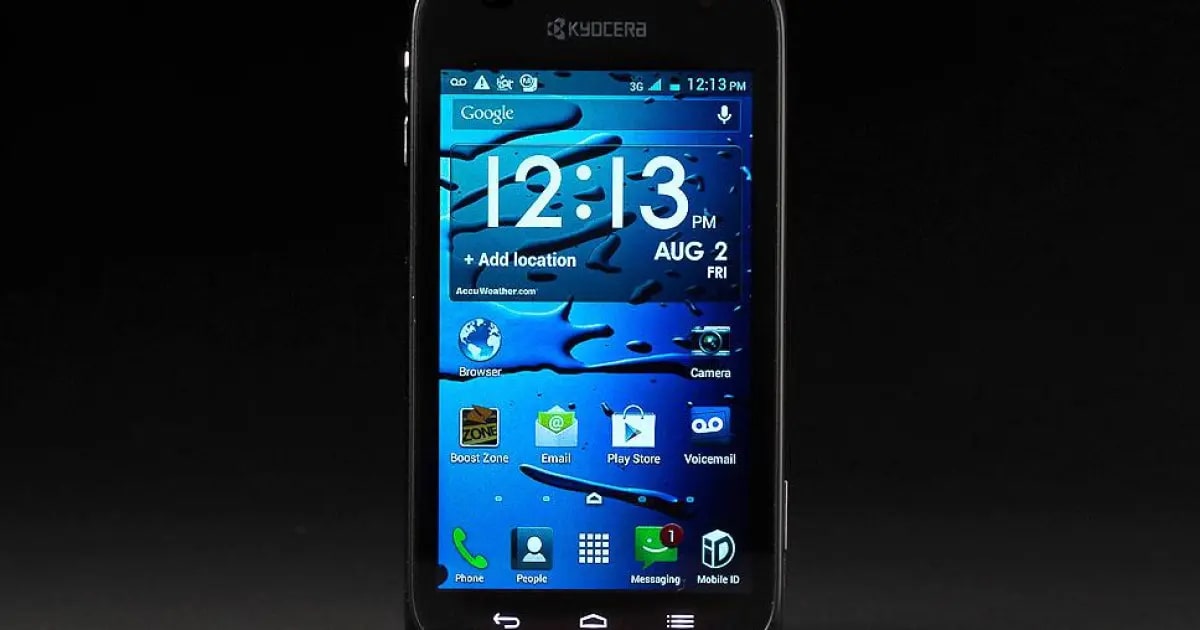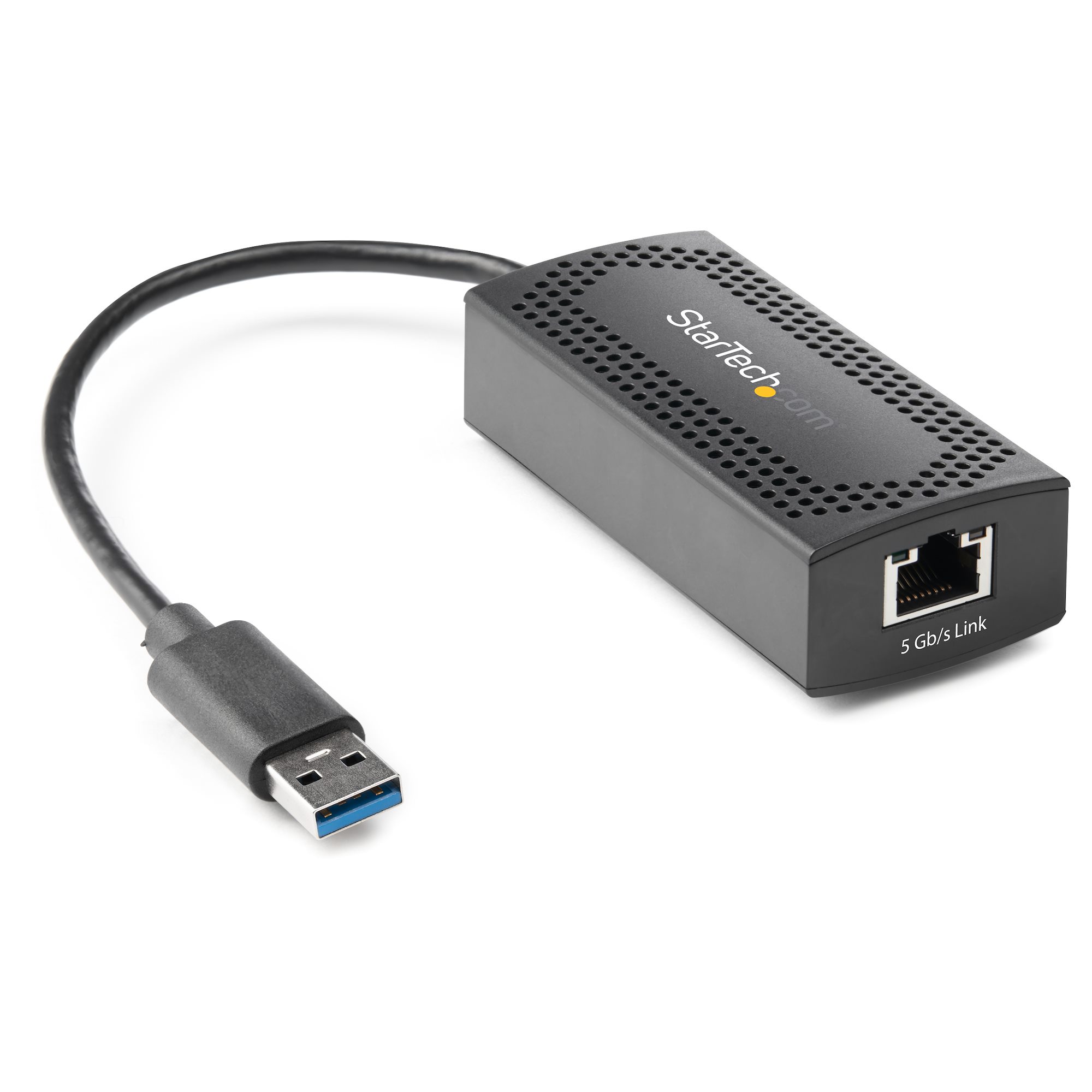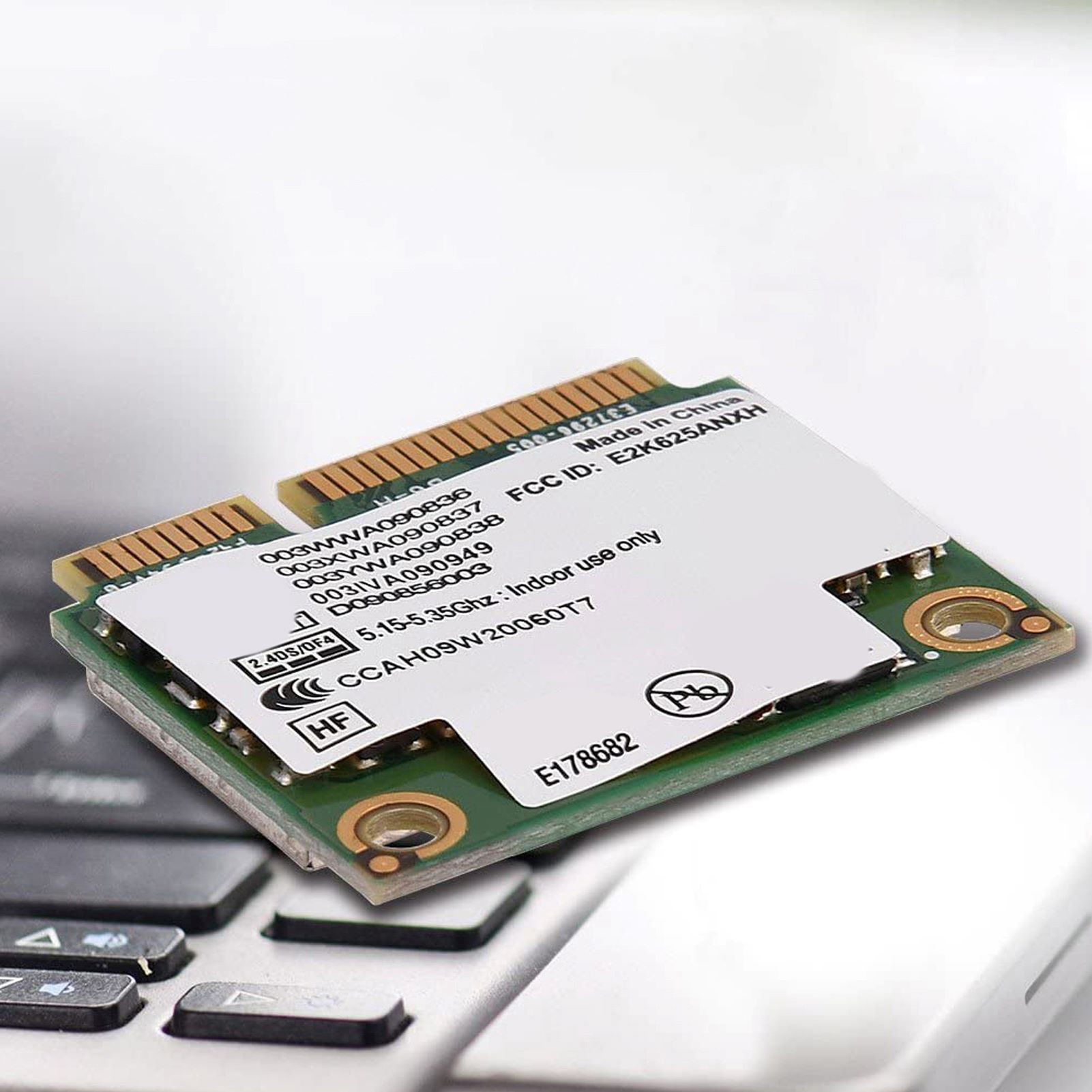Introduction
With the rapid advancements in technology, we are witnessing the evolution of mobile networks. One of the latest developments in this field is the emergence of 5G E, which stands for 5G Evolution. This term has generated plenty of excitement and speculation among consumers and industry professionals alike.
5G E has been introduced by some mobile network providers as an intermediate step towards true 5G connectivity. It promises faster speeds, lower latency, and enhanced network capabilities. However, there have been misconceptions and controversies surrounding 5G E that have caused confusion among users.
In this article, we will delve into the intricacies of 5G E and how it differs from true 5G technology. We will also explore the benefits of 5G E and shed light on its functionality and future prospects. By the end, you will have a better understanding of what 5G E entails and its significance in the current mobile network landscape.
What is 5G E?
5G E, or 5G Evolution, is a term coined by some mobile network providers to denote an enhanced version of their existing 4G LTE technology. It is important to note that despite the name, 5G E is not true 5G. Instead, it is an upgrade of the existing 4G network infrastructure that aims to provide faster speeds and improved performance.
The “E” in 5G E stands for “Evolution,” symbolizing the transformative nature of this upgrade. Mobile network providers that use this term claim that 5G E is capable of delivering download speeds that are up to twice as fast as traditional 4G LTE. This enhanced speed is achieved through carrier aggregation, a technique that allows for the simultaneous use of multiple frequency bands to increase bandwidth and improve network performance.
Furthermore, 5G E promises reduced latency, which refers to the time it takes for data to travel between a user’s device and the network. Lower latency translates to faster response times, making activities such as online gaming and video streaming more seamless and enjoyable. Additionally, 5G E boasts improved network capacity, enabling more devices to connect simultaneously without experiencing congestion or slowdowns.
While 5G E offers some notable improvements over traditional 4G LTE, it is important to highlight that it is not true 5G. True 5G networks utilize a completely new infrastructure and technology, including higher frequency bands and advanced network architecture, to deliver even faster speeds, lower latency, and a wide range of unprecedented applications and services. Nonetheless, 5G E serves as a valuable stepping stone towards the eventual deployment of true 5G networks.
The Evolution of Mobile Networks
Mobile networks have come a long way since the inception of the first generation (1G) networks, which were primarily analog-based voice services. As technology progressed, so did the capabilities and performance of these networks, leading to the development of subsequent generations of mobile networks.
The second generation (2G) introduced digital voice services and enabled basic messaging capabilities, such as SMS. 2G networks brought about significant improvements in call quality and network efficiency compared to their analog predecessors.
With the advent of the third generation (3G) networks, mobile internet access became a reality for users. 3G networks supported higher data transfer rates and introduced services like video calling and mobile broadband. These advancements paved the way for a wide range of applications and transformed the way people connect and communicate.
The fourth generation (4G) networks marked a significant milestone by delivering faster data speeds, lower latency, and improved network capacity. 4G LTE (Long-Term Evolution) technology revolutionized mobile internet connectivity, enabling seamless video streaming, online gaming, and reliable VoIP (Voice over Internet Protocol) services.
As mobile network providers strive to meet the growing demands of consumers, the next evolution in mobile networks is 5G. While 5G offers numerous advancements and promises unprecedented speeds and capabilities, the transition to true 5G technology will take time. In the meantime, mobile network providers have introduced 5G E as an intermediary step to enhance the existing 4G LTE infrastructure and provide users with improved network performance.
The evolution of mobile networks has been driven by the need for faster, more reliable, and efficient connectivity. Each subsequent generation has brought about significant improvements to meet the ever-increasing demands of an interconnected world. With 5G E, mobile network providers are aiming to deliver a glimpse of the future while laying the foundation for the widespread adoption and deployment of true 5G technology.
Understanding Network Generations
Mobile networks have experienced several advancements throughout the years, resulting in different generations of technology. Each generation signifies a significant leap forward in terms of speed, capacity, and functionality. Let’s explore the key characteristics of each network generation:
1G: Analog Voice
The first generation of mobile networks, known as 1G, was primarily focused on providing analog voice services. These networks utilized analog technology and allowed for basic voice calls with limited coverage and quality.
2G: Digital Voice and SMS
The advent of the second generation (2G) networks brought about a shift from analog to digital communication. This enabled clearer voice calls and introduced the ability to send SMS (Short Message Service) text messages. 2G networks expanded coverage and improved network efficiency.
3G: Mobile Internet Access
The third generation (3G) revolutionized mobile connectivity by introducing mobile internet access. With 3G networks, users gained the ability to browse the web, send emails, and access a wide range of online services through their mobile devices. 3G networks offered faster data transfer rates and facilitated multimedia communication.
4G: Faster Data Speeds and Advanced Services
The fourth generation (4G) networks, specifically 4G LTE (Long-Term Evolution), brought about significant advancements in mobile connectivity. 4G networks delivered faster data speeds and lower latency, enabling seamless video streaming, online gaming, and other data-intensive applications. Additionally, 4G networks supported advanced features like Voice over LTE (VoLTE) and offered enhanced network capacity.
5G: Next-Generation Connectivity
The latest generation of mobile networks, 5G, is set to revolutionize mobile connectivity even further. 5G promises lightning-fast speeds, ultra-low latency, and massive network capacity, opening up possibilities for innovative applications such as autonomous vehicles, remote surgical procedures, and smart cities. True 5G networks utilize higher frequency bands and employ advanced network technologies like network slicing and edge computing to provide unparalleled connectivity experiences.
Understanding the different network generations helps us appreciate the continuous evolution of mobile networks and the remarkable advancements in telecommunications technology. While each generation has brought significant improvements, the transition from one generation to another takes time and requires infrastructure upgrades and industry-wide implementation. In the meantime, 5G E offers an enhanced experience over traditional 4G networks, bridging the gap until true 5G becomes widely available.
Misconceptions and Controversies Surrounding 5G E
The emergence of 5G E has led to various misconceptions and controversies in the industry. Despite its name, which suggests a significant leap in technology, 5G E has faced criticism for misleading consumers and diluting the true meaning of 5G. Let’s explore some of the main misconceptions and controversies surrounding 5G E:
Misleading Terminology
One of the primary controversies surrounding 5G E is the use of the term “5G” in its name. Critics argue that this terminology can confuse consumers, leading them to believe that 5G E is the same as true 5G technology. This controversy has sparked debates among industry professionals and consumer advocacy groups.
Not True 5G
Another misconception is that 5G E is equivalent to true 5G. In reality, 5G E is an evolution of existing 4G LTE networks and falls short of the significant technological advancements and capabilities that true 5G networks offer. While 5G E provides enhanced speeds and performance, it is still built on the foundation of 4G technology.
Confusion among Consumers
The ambiguous marketing of 5G E has led to confusion among consumers. Many users may not fully understand the differences between 5G E and true 5G, leading to unrealistic expectations and potential disappointment. This confusion can create challenges for mobile network providers as they try to manage customer expectations and ensure a smooth transition to true 5G networks.
Industry Competition
The controversy surrounding 5G E is also fueled by intense competition among mobile network providers. Some providers have opted to adopt the term 5G E as a marketing strategy to position themselves as leaders in network technology. This has resulted in a race to provide the highest level of perceived connectivity without actually deploying true 5G infrastructure.
It is important for consumers to be aware of the distinction between 5G E and true 5G technology. Although 5G E brings improvements over traditional 4G networks, it is crucial to understand that true 5G will offer even more remarkable advancements and capabilities. As the industry continues to evolve, it is essential for mobile network providers to ensure transparency and educate consumers about the technology they are offering to avoid potential confusion and controversies.
The Benefits of 5G E
Despite the controversies and misconceptions surrounding 5G E, it does offer several benefits for users. Let’s explore some of the advantages of 5G E technology:
Enhanced Speeds
One of the key benefits of 5G E is the potential for faster download and upload speeds compared to traditional 4G LTE networks. By utilizing advanced techniques such as carrier aggregation, 5G E can combine multiple frequency bands to increase bandwidth, allowing for quicker data transfer and improved overall network performance.
Lower Latency
5G E also promises lower latency, which means reduced response time between a user’s device and the network. This improvement enables real-time, interactive applications to function more efficiently. Activities such as online gaming, video conferencing, and voice calls will experience a decrease in delay, resulting in a smoother and more immersive user experience.
Improved Network Capacity
With the growing number of connected devices, network capacity has become a critical factor in ensuring a seamless user experience. 5G E offers improved network capacity, allowing more devices to connect simultaneously without experiencing congestion or degradation in network performance. This enhancement will support the increasing demand for connected devices and the Internet of Things (IoT) applications.
Seamless Transition to True 5G
The adoption of 5G E serves as a necessary step towards the deployment of true 5G networks. By upgrading and optimizing the existing 4G LTE infrastructure, mobile network providers can smoothly transition towards true 5G technology without requiring a complete overhaul of the network architecture. This gradual approach ensures a more efficient and cost-effective implementation of the next generation of mobile networks.
While 5G E may not offer the full range of capabilities and advancements of true 5G technology, its benefits cannot be ignored. It provides users with faster speeds, lower latency, and improved network capacity, offering an enhanced mobile experience compared to traditional 4G LTE networks. These benefits lay the groundwork for the eventual widespread adoption of true 5G and the exciting possibilities it holds for various industries and applications.
How 5G E Works
To understand how 5G E works, it is essential to grasp the underlying technology and enhancements that enable improved network performance. Here is a breakdown of the key components and techniques used in 5G E:
Carrier Aggregation
Carrier aggregation is a fundamental technique employed in 5G E to enhance speeds and increase network capacity. It involves combining multiple frequency bands to create a wider bandwidth for data transmission. By utilizing carrier aggregation, 5G E can boost download and upload speeds by allowing devices to communicate with multiple cellular towers simultaneously.
Advanced Antenna Technology
5G E utilizes advanced antenna technologies to improve coverage and signal quality. Multiple-input, multiple-output (MIMO) antennas play a crucial role in enhancing the network’s efficiency and capacity. MIMO antennas enable the transmission and reception of multiple data streams simultaneously, increasing data throughput and overall network performance.
Network Optimization
Mobile network providers optimize their existing 4G LTE infrastructure to deliver the benefits of 5G E. This involves fine-tuning network settings, upgrading base stations, and implementing software improvements to make the network more robust and capable of handling higher data volumes and increased user demand.
Evolutionary Approach
5G E represents an evolutionary approach to network advancements. Unlike a complete transition to true 5G, 5G E builds upon the existing 4G LTE infrastructure to deliver improved performance. This approach allows mobile network providers to leverage their existing network resources while gradually implementing the necessary upgrades for future 5G deployment.
By implementing carrier aggregation, advanced antenna technology, and network optimization, 5G E provides enhanced speeds, lower latency, and improved network capacity. These improvements are achieved within the existing 4G LTE framework, allowing for a smoother transition towards true 5G networks in the future.
5G E vs. True 5G: What’s the Difference?
While 5G E and true 5G share similarities in terms of improved network performance, they are fundamentally different in terms of technology and capabilities. Here are the key differences between 5G E and true 5G:
Technology and Infrastructure
The most significant difference between 5G E and true 5G lies in their underlying technology and infrastructure. 5G E is an upgrade of existing 4G LTE networks, utilizing techniques like carrier aggregation and advanced antenna technology to enhance performance. True 5G, on the other hand, requires a complete shift to new infrastructure, including higher frequency bands and advanced network architecture, to deliver the transformative benefits associated with next-generation connectivity.
Speed and Performance
True 5G promises unparalleled speed and performance compared to 5G E. While 5G E can deliver faster speeds than traditional 4G LTE networks, true 5G networks have the potential to achieve speeds that are multiple times faster. This significantly enhances the user experience, enabling seamless streaming, quicker downloads, and near-instantaneous response times for applications and services.
Latency
Reduced latency is a key advantage of both 5G E and true 5G. However, true 5G networks can achieve even lower latency than 5G E. This is crucial for real-time applications such as autonomous vehicles, remote surgery, and virtual reality, which require instant response times for optimum performance and safety.
Capacity and Connectivity
True 5G networks offer massive connectivity and network capacity compared to 5G E. With the ability to support a significantly larger number of devices simultaneously, true 5G enables the seamless integration of the Internet of Things (IoT) and supports the growing demand for connected devices in various industries. This results in enhanced efficiency, reduced congestion, and more reliable connectivity in crowded areas.
Innovation and Applications
True 5G networks unlock a world of unprecedented innovation and possibilities. With its ultra-fast speeds, low latency, and massive connectivity, true 5G enables transformative technologies such as augmented reality, virtual reality, autonomous vehicles, and smart city infrastructure. These groundbreaking applications and services are not achievable with 5G E alone.
In summary, while 5G E is an enhanced version of 4G LTE networks that provides improved speeds, lower latency, and enhanced network capacity, it is not comparable to the revolutionary capabilities of true 5G technology. True 5G networks offer significantly faster speeds, lower latency, and game-changing connectivity that enable a wide range of innovative applications and services, setting the stage for the next wave of technological advancements.
The Future of 5G E
The future of 5G E lies in its role as a stepping stone towards the widespread adoption of true 5G networks. While 5G E offers significant improvements over traditional 4G LTE, it is ultimately an intermediate solution as the world transitions towards the next generation of mobile networks. Here are some key aspects to consider regarding the future of 5G E:
Deployment and Coverage
As mobile network providers continue to upgrade their networks, the deployment and coverage of 5G E will expand. More areas will have access to improved network speeds and performance, allowing users to take advantage of enhanced connectivity. However, the coverage of 5G E will still be more limited compared to the eventual coverage of true 5G networks.
User Experience
In the near future, users will increasingly benefit from the improved user experience provided by 5G E. Faster download speeds, lower latency, and improved network capacity will enhance activities such as streaming, online gaming, and video conferencing. Users will also experience smoother connections and reduced network congestion in crowded areas, leading to a more reliable and seamless mobile experience.
Transition to True 5G
While 5G E is an intermediary solution, it serves an important purpose in the transition to true 5G networks. The deployment of 5G E allows mobile network providers to optimize their existing network infrastructure and gradually incorporate the necessary upgrades for true 5G. This approach ensures a smoother transition and provides users with a taste of the benefits that true 5G will bring.
Industry Applications
5G E brings improvements that can benefit various industries beyond consumer usage. Industries such as healthcare, transportation, manufacturing, and entertainment can leverage the enhanced network capabilities of 5G E for applications like telemedicine, autonomous vehicles, smart factories, and immersive media experiences. These early enhancements pave the way for more transformative applications once true 5G networks are fully deployed.
As the industry progresses, 5G E will continue to play a crucial role in the evolution of mobile networks. It serves as an important bridge towards the deployment of true 5G networks, offering tangible improvements to users and preparing the groundwork for the groundbreaking applications and services that lie ahead.
Conclusion
5G E, or 5G Evolution, represents an enhanced version of existing 4G LTE networks that offers improved speeds, lower latency, and enhanced network capacity. While not equivalent to true 5G, 5G E serves as an important stepping stone towards the deployment of next-generation mobile networks.
Throughout the article, we have explored the differences between 5G E and true 5G, highlighting the technological advancements and capabilities that differentiate the two. While 5G E provides significant benefits, including faster speeds, lower latency, and improved network capacity, it is essential to recognize that true 5G networks offer even greater speed, lower latency, massive connectivity, and unparalleled innovation.
Despite the controversies and misconceptions surrounding 5G E, its deployment and expansion will improve the overall mobile experience for users. It offers faster download and upload speeds, lower latency for real-time applications, and improved network capacity to support the growing number of connected devices.
Looking towards the future, 5G E will continue to play a crucial role as mobile network providers transition to true 5G networks. The deployment and coverage of 5G E will expand, providing users with an enhanced mobile experience. Additionally, the enhanced network capabilities of 5G E will open doors to innovative applications and services across various industries.
In conclusion, while 5G E is not the same as true 5G, it delivers tangible improvements that bridge the gap between traditional 4G LTE networks and the forthcoming true 5G technology. As the industry progresses, 5G E serves as a foundation for the deployment of true 5G and unlocks a world of possibilities for a more connected and advanced future.

























